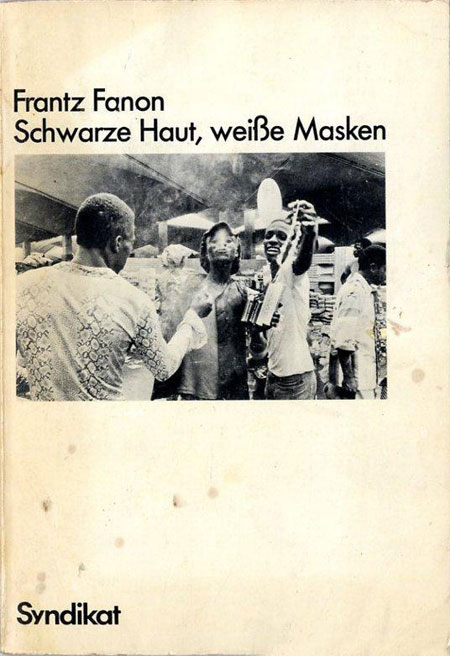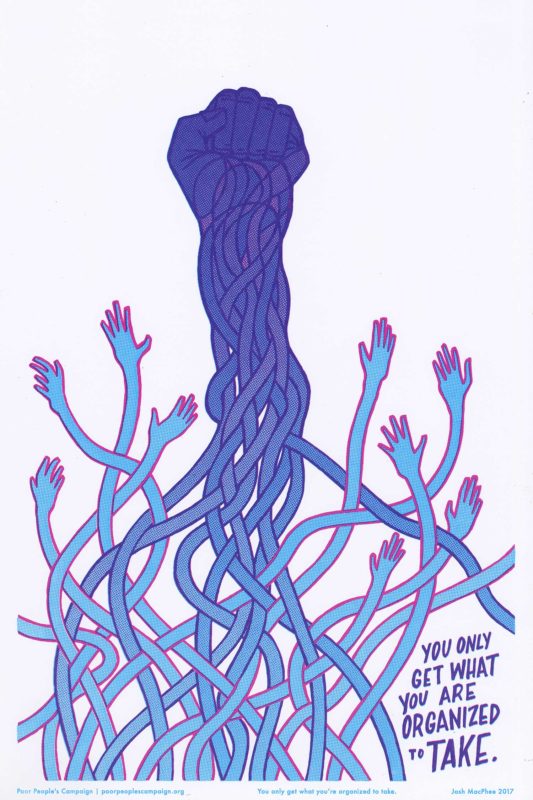Frantz Fanon’s Black Skin, White Masks was initially published in 1952 by Editions Du Seuil. I’ve been digging around and have yet to find a cover for that first edition, the best I can do is a 1965 edition from Du Seuil, to the right. There is usually little to say about French covers, and Continental covers more broadly from this period, because they are almost all clean and austere, with minimal graphic qualities and simple series’ markings and the title and author in a clean typeface. (For the run down on the English-language editions of Black Skin, click HERE).
At some point Du Seuil moved Black Skin to its paperback imprint Points. The earliest Points edition I could find was 1971. I generally don’t find covers that feature author photos very inspiring, but this one is nice. The placement of Fanon in the borderles, circle centered at the bottom of the cover works well. He is peering out from inside the book, the reader simply needs to reach in and find him.
In 1975 the series style demands at Points must have changed, as the circle of Fanon’s face has been replaced with a more general gold globe, with nothing other than the text indicating what the book is.


Later Points decided to return to the image of Fanon for the cover, but abandoned the circle device, just leaving the same portrait. This makes for a much less intriguing design. In 1993 the circle returns, but Fanon’s head is shrunk, so he fits comfortably in the sphere. It’s strange, back in 1971 they definitely had the strongest of these designs, but felt the need to keep altering the cover over 20 years, but never truly improving on it.


Below right is an Algerian copy published by Editions ANEP in 2004. It doesn’t really work as a book cover, but it is an interesting a design. Poor Fanon is forced to wear not one, but three white masks! There is some resonance with the comedy/tragedy drama masks, but the cover also makes him look somewhat like a birdman.
The Romanian cover to the left (Tact) forgoes specific representation, but the tearing of the “white” paper to reveal “black” underneath is a clever graphic device to illustrate the content of the book: it may look white on the surface, but inside it is Black.


Syndikat brought out a German edition in 1980. The cover is nice and clean, Futura for the type, but the photo is odd. It appears to be a group of Black people smoking and partying, but the implication is unclear: Is this a “white mask”? Given that Syndikat was publishing Left and activist titles, I wonder whether the cover can be read as moralistic, a critique of Black people doing things other than carrying out a revolution?
A later Suhrkamp edition has the opposite problem. While Black Skins is a more philosophical work based in psychoanalytics, this cover shows revolutionary African masses. This seems endemic to Fanon cover design, where his name becomes shorthand for two distinct graphic elements, Black people rising up and Africran masks, but these elements are consistently used on the books they least fit with.


For Black Skin I found two different Turkish editions. This first one appears to be published by Sosyalist Yaymlar (although I’m not entirely sure) in 1996, and the cover is striking. The angry sculptural face is powerful, but the meaning alludes me. Either this statue is specifically connected to the content of the book, or the cover seems pretty random. The second is published by Versus Kitap, with the same basic cover as their edition of Wretched of the Earth we looked at a couple weeks back (there has to be a better painting of Fanon than this splotchy one that keep showing up on different book covers!).
I found one Arabic edition (Dar Al-Farabi, 1994), with a cover clearly evolved from the Seuil editions. A degraded version of the same picture of Fanon (including the edges clipped by the circle from the original cover) is roughly boxed in green and black. Not too graceful, but it works OK.



After much effort, I tracked down three Spanish language covers, but unfortunately I no actual books, and only low-res and largely blurry images online. I apologize for not having any publisher info, dates, or designers for these covers. But hopefully this first one will make up for it—Eldridge Cleaver in neon yellow and orange! I’m not entirely sure why he’s been put in a purple box, but it is a provocative image choice, and powerful color palette, which likely dates this in the late 60s, early 70s. I give this an A for simple boldness, it’s hard to imagine getting away with a cover like this today.
The below left is an updated “African statue/mask” cover, with all of the accompanying problems. There is no clarity as to what where the mask graphic is from (probably entirely fictional), and there is a strange inversion of the actual thesis of the book, where Fanon consciously rejects any return to a past as the key to Black liberation.
The final Spanish cover uses the same blotchy painting of Fanon featured on the Turkish editions, to no better effect.



Stay tuned, in the following weeks I’ll look at Fanon’s last 2 books—A Dying Colonialism and Toward the African Revolution—as well as a large body of biographies and other odds and ends. There’s some great covers still to come.








